Forests are a crucial component of global ecology. They cover about one third of the Earth’s land surface, and play key roles in mitigating climate change, maintaining biodiversity and protecting soil and water resources.
Some forests perform these functions more effectively than others. Man-made woodlands dominated by a single type of tree can’t nurture nearly so many animal, bird and insect species as old-growth tropical rainforest. The amount of carbon stored in wood, leaves and soil varies greatly from one place to another. The “integrity” of a forest — the degree to which its ecosystems have escaped human modification — is a huge influence on how much good it does the planet.
To better quantify and map the state of the world’s forests, an international team of experts last year devised the Forest Landscape Integrity Index (FLII). In a paper published on Dec. 8 last year in Nature Communications, they described the FLII as “a globally consistent, continuous index of forest condition as determined by the degree of anthropogenic modification.”
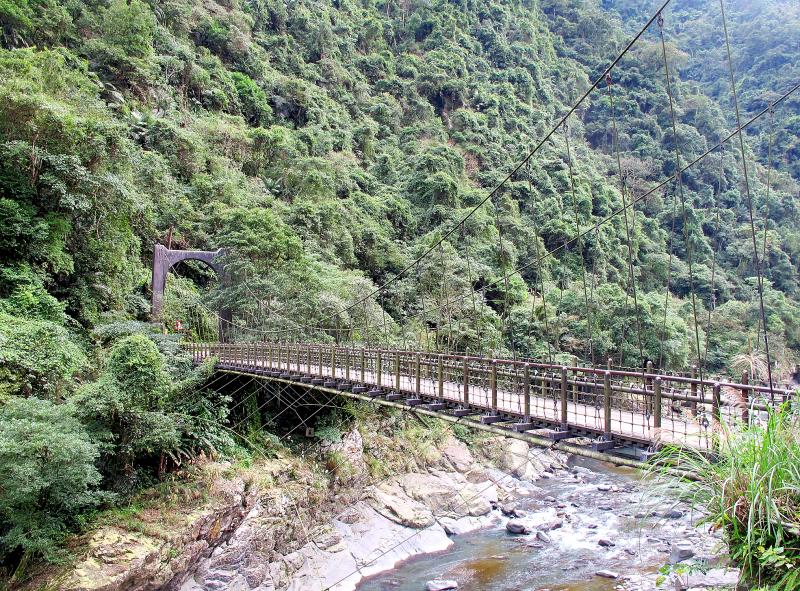
Photo: Steven Crook
The FLII assessed forests (which it defines as woody vegetation taller than 5m) by weighing observed human pressures (roads and other infrastructure obvious from satellite images), inferred human pressures (such as collection of forest materials) and changes in forest connectivity (habitat fragmentation is a serious problem for many animal and bird species).
According to the FLII, only four tenths of the world’s forests display high landscape-level integrity. The paper’s authors argue that: “Ambitious policies that prioritize the retention of forest integrity, especially in the most intact areas, are now urgently needed alongside current efforts aimed at halting deforestation and restoring the integrity of forests globally.”
On the FLII Web site (www.forestintegrity.com), it’s possible to zoom in on any point on Earth. Wooded land is colored brown (indicating low landscape integrity), light green (medium integrity) or dark green (high integrity). Each pixel represents a 300m x 300m plot.
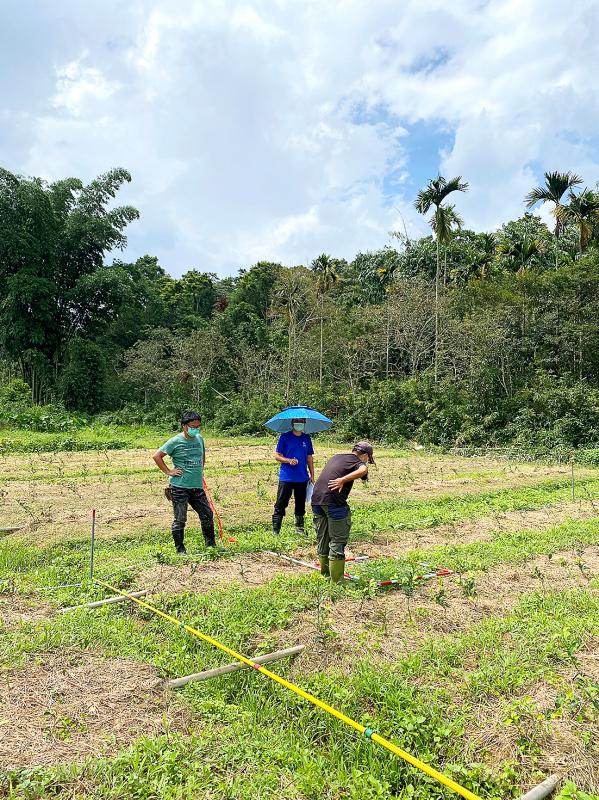
Photo courtesy of Chiang Jyh-min
Mean forest integrity indices have been calculated for 172 countries and territories. Taiwan’s FLII of 6.38 is lower than that of the US (6.65) or China (7.14), but higher than that of South Korea (6.02), Thailand (exactly 6) and Japan (5.8).
Taiwan isn’t unusual in having just a small area of high-integrity woodland (about 5.9 percent of all forest — less than the combined land area of Taroko (太魯閣) and Shei-Pa (雪霸) national parks) but a high proportion of medium-integrity forest.
The index doesn’t take into consideration areas of forest which, as the human population grew and spread, disappeared altogether.
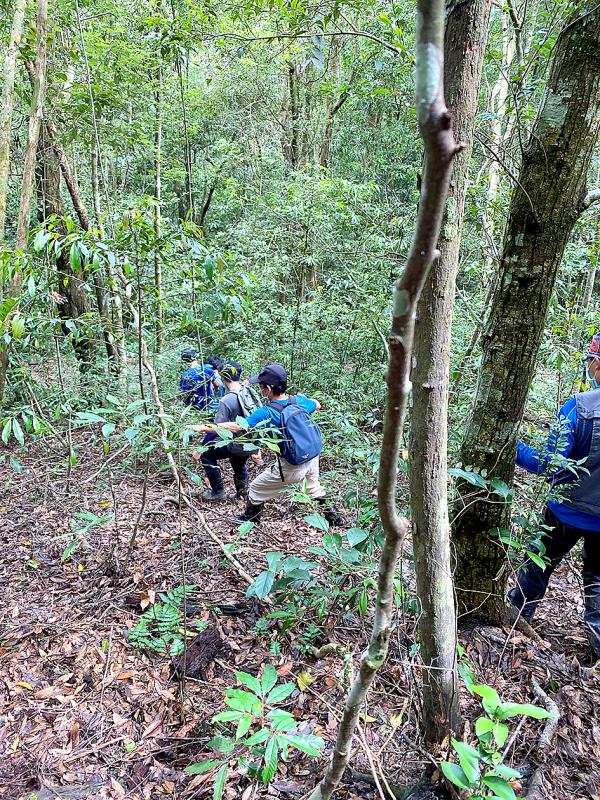
Photo courtesy of Chiang Jyh-min
Looking at the FLII map for Taiwan, there’s an obvious correlation between altitude and forest integrity. Almost all the green pixels are located within or very close to the mountain ranges that dominate the interior and the east coast. Foothill areas are invariably brown. There’s hardly any forest on the flatlands.
Curious to know if the FLII’s “one size fits all” approach presents an accurate picture of the country’s wooded areas, the Taipei Times reached out to Chiang Jyh-min (江智民), a professor in the Department of Life Science at Tunghai University.
After examining how the FLII was calculated, Chiang says: “I think the method is quite comprehensive and appropriate for forests around the globe, including Taiwan. I’ve also checked their results Web page, and zoomed in on different areas of Taiwan and found it generally realistic.”
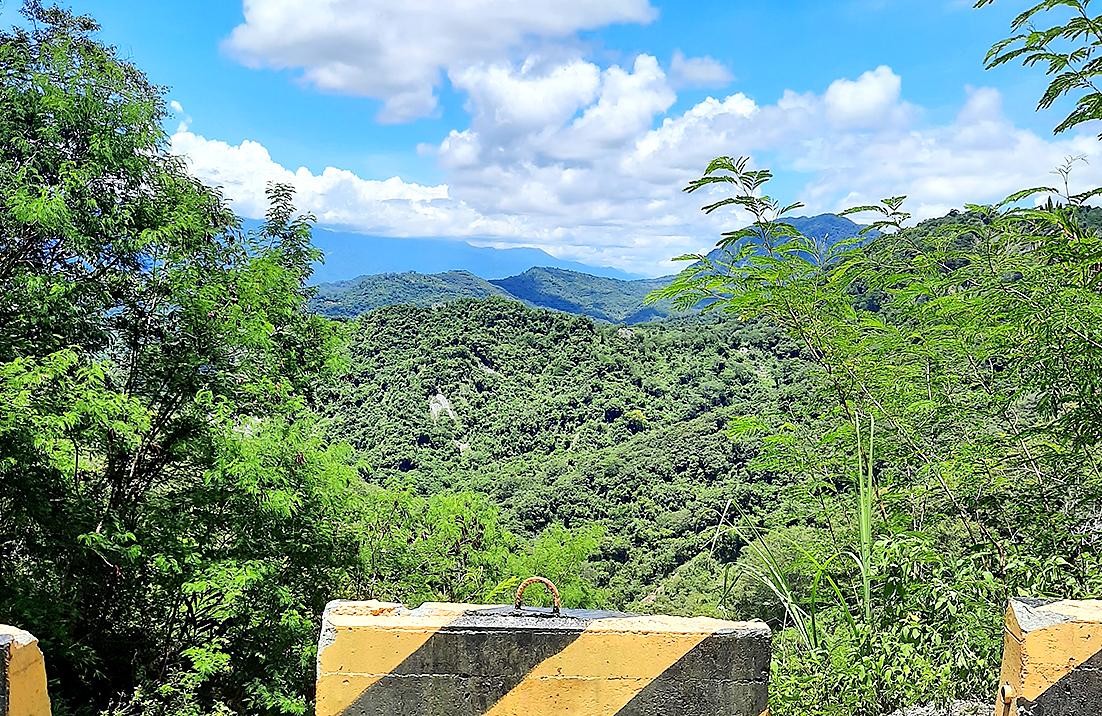
Photo: Steven Crook
However, he expresses doubts about the high-integrity rating given to some high-altitude agricultural areas, such as those between Hehuanshan (合歡山) and Yilan accessed by Provincial Highway 7A (台7甲) and those near Lishan (梨山) close to Provincial Highway 8 (台8).
“It’s hard to believe that these areas have higher FLII values than rural areas such as Taiping (太平) in Taichung or Baguashan (八卦山) in Changhua,” he says.
“Proper functioning of an ecosystem requires the stable movement of energy and matter throughout different components of the ecosystem, thus sustaining the stability and diversity of microhabitats. Functions crucial to human welfare, which we call ‘ecosystem services,’ include carbon sequestration, erosion control, provision of raw materials, maintenance of climate stability, water supplies and so on,” says Chiang, who’s also director of Tunghai University’s Center for Ecology and Environment.
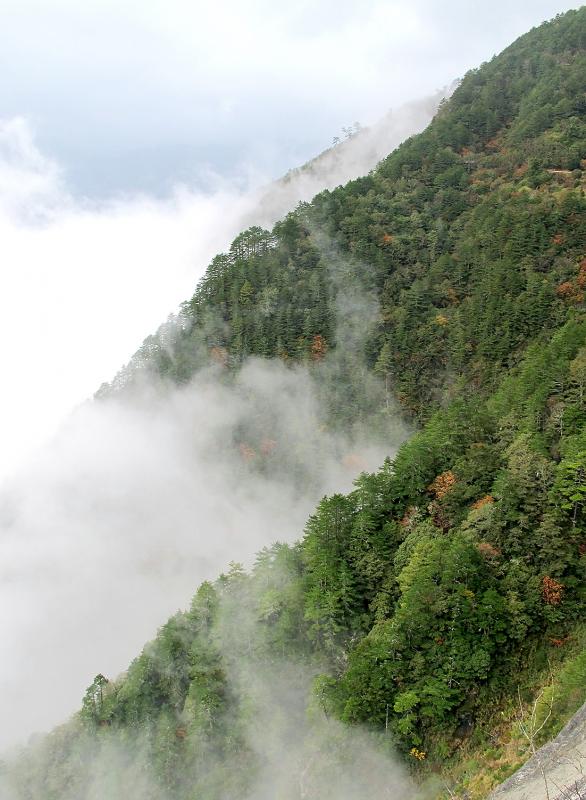
Photo: Steven Crook
Referring to an area he knows well, Chiang says that people living near Lienhuachih Research Center (蓮華池研究中心) and its experimental forest in Nantou County depend on the natural broadleaf and plantation forest for a stable water supply.
“Even during the sustained drought earlier this year, farmers there were able to use stream water for irrigation,” he says.
The research center is affiliated with the Council of Agriculture’s Taiwan Forestry Research Institute.
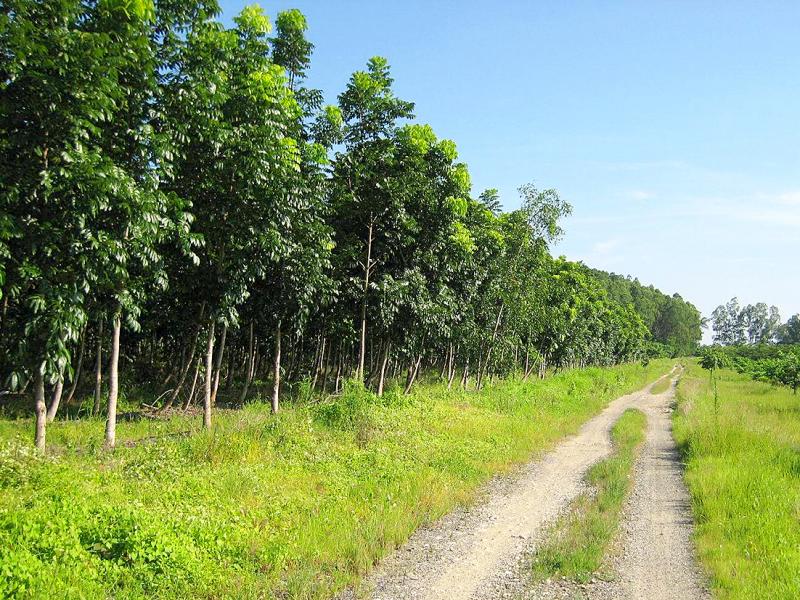
Photo: Steven Crook
In recent years, Lienhuachih residents have had another reason to care about the health of nearby woodlands. The area’s forests are important wildlife habitats, and the growth of ecotourism in the area “is deeply dependent on forest integrity and the quality of the landscape,” says Chiang.
Around the world, human activities range from eco-friendly practices to atrociously destructive behavior.
“Take tea plantations, for example,” says Chiang. “Organic farming and regular farming practices have very different environmental impacts on the integrity of the nearby forests. I don’t think the FLII takes the difference into account.”
Overall, Taiwan’s government has done “a very good job” protecting the integrity of the country’s forests, Chiang says. He highlights the longstanding ban on logging natural forests and the large parcels of land protected by national parks as successful policies.
However, he urges the authorities to pay more attention to lands between protected areas and human settlements, as that’s where there’s partial cultivation and other human impacts.
Chiang supports the Forestry Bureau’s Green Network Establishment Project as an attempt to “reconnect fragmented habitats to larger protected areas, through streams and green corridors, to sustain the ecosystem functions and the biodiversity of these ‘forgotten areas’” — but points out that private land ownership complicates this effort.
He hopes the government can steer the agricultural sector toward environmentally-friendly practices such as organic farming. He also approves of government efforts to regulate campgrounds.
Chiang’s team was awarded a four-year grant by the Ministry of Science and Technology to investigate the ecosystem services of the Lienhuachih area and how they impact local businesses.
His team is investigating: the extent of land-use change in recent years as camping has grown in popularity; how local biodiversity depends on the forest’s ecosystem functionings; and how climate change can potentially impact ecosystem functioning and, consequently, local businesses. In addition, they’re trying to determine how much local people know about the ecosystem services they depend on, and what activities can be implemented to promote local awareness of forest integrity.
Lienhuachih residents are already showing some understanding of and interest in preserving the natural environment.
Each year, between late April and early May, tens of thousands tourists visit the area to see fireflies. Recognizing the value of these insects to the local economy, residents have established a committee to protect water quality in streams that are crucially important to maintaining the health of firefly habitats.
That’s a start.
Steven Crook, the author or co-author of four books about Taiwan, has been following environmental issues since he arrived in the country in 1991. He drives a hybrid and carries his own chopsticks. The views expressed here are his own.

May 11 to May 18 The original Taichung Railway Station was long thought to have been completely razed. Opening on May 15, 1905, the one-story wooden structure soon outgrew its purpose and was replaced in 1917 by a grandiose, Western-style station. During construction on the third-generation station in 2017, workers discovered the service pit for the original station’s locomotive depot. A year later, a small wooden building on site was determined by historians to be the first stationmaster’s office, built around 1908. With these findings, the Taichung Railway Station Cultural Park now boasts that it has

The latest Formosa poll released at the end of last month shows confidence in President William Lai (賴清德) plunged 8.1 percent, while satisfaction with the Lai administration fared worse with a drop of 8.5 percent. Those lacking confidence in Lai jumped by 6 percent and dissatisfaction in his administration spiked up 6.7 percent. Confidence in Lai is still strong at 48.6 percent, compared to 43 percent lacking confidence — but this is his worst result overall since he took office. For the first time, dissatisfaction with his administration surpassed satisfaction, 47.3 to 47.1 percent. Though statistically a tie, for most

Wooden houses wedged between concrete, crumbling brick facades with roofs gaping to the sky, and tiled art deco buildings down narrow alleyways: Taichung Central District’s (中區) aging architecture reveals both the allure and reality of the old downtown. From Indigenous settlement to capital under Qing Dynasty rule through to Japanese colonization, Taichung’s Central District holds a long and layered history. The bygone beauty of its streets once earned it the nickname “Little Kyoto.” Since the late eighties, however, the shifting of economic and government centers westward signaled a gradual decline in the area’s evolving fortunes. With the regeneration of the once

In February of this year the Taipei Times reported on the visit of Lienchiang County Commissioner Wang Chung-ming (王忠銘) of the Chinese Nationalist Party (KMT) and a delegation to a lantern festival in Fuzhou’s Mawei District in Fujian Province. “Today, Mawei and Matsu jointly marked the lantern festival,” Wang was quoted as saying, adding that both sides “being of one people,” is a cause for joy. Wang was passing around a common claim of officials of the People’s Republic of China (PRC) and the PRC’s allies and supporters in Taiwan — KMT and the Taiwan People’s Party — and elsewhere: Taiwan and